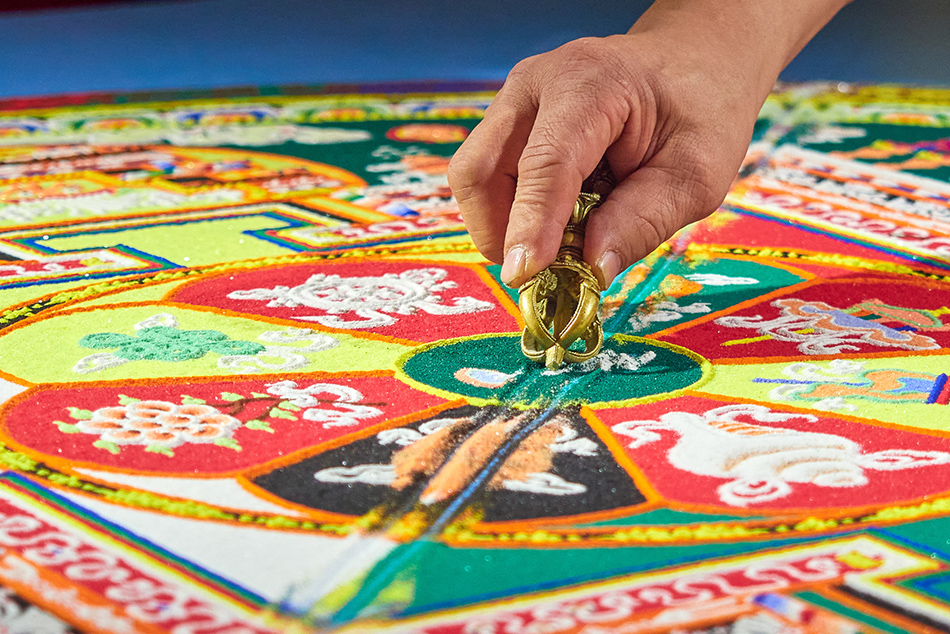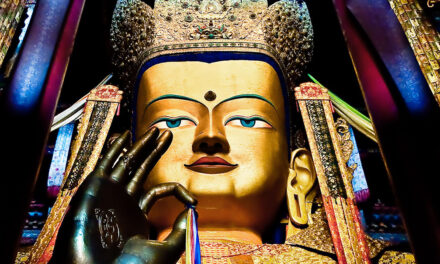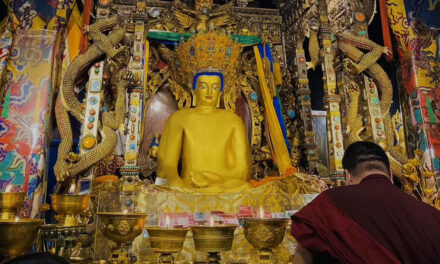In Tibetan Buddhism, the concept of Samsara holds profound significance. It encapsulates the perpetual cycle of birth, death, and rebirth that all beings are believed to undergo until they attain liberation. Let’s delve into the depths of Samsara, exploring its intricacies and the path to transcendence.
Karma: The Law of Cause and Effect
Karma, the law of cause and effect, plays a pivotal role in Samsara. Every action, thought, and intention accumulates karma, shaping the course of future lives. Positive actions lead to favorable circumstances, while negative actions result in suffering. Understanding karma is fundamental to navigating the cycle of Samsara.
The Six Realms: A Multifaceted Existence
The cycle of Samsara encompasses six realms of existence: gods, demi-gods, humans, animals, hungry ghosts, and hell beings. Each realm is characterized by distinct experiences and levels of suffering. Beings continuously migrate through these realms based on the karma generated by their actions.
The Three Poisons: Root Causes of Suffering
Ignorance, attachment, and aversion are the three poisons that fuel the cycle of Samsara. Ignorance of the true nature of reality perpetuates delusion, while attachment and aversion bind beings to cyclic existence. Recognizing and overcoming these poisons is essential for liberation.
Breaking Free: The Path to Liberation
Breaking free from Samsara requires diligent practice and inner transformation. Meditation, mindfulness, and ethical conduct are integral to transcending the cycle of suffering. By cultivating virtue and wisdom, individuals can gradually loosen the grip of karma and attain liberation.
The Guru: Guiding Light on the Path
In Tibetan Buddhism, the guidance of a guru is indispensable on the path to liberation. A qualified teacher provides invaluable instruction and support, helping disciples navigate the complexities of Samsara and deepen their spiritual practice.
The Four Noble Truths: Foundation of Buddhist Philosophy
The Four Noble Truths form the cornerstone of Buddhist teachings on Samsara. They elucidate the nature of suffering, its causes, cessation, and the path to liberation. Understanding and internalizing these truths is essential for transcending Samsara.
Emptiness and Interdependence: The Ultimate Reality
Emptiness lies at the heart of Buddhist philosophy, revealing the true nature of reality. By recognizing the interdependence and emptiness of all phenomena, individuals can liberate themselves from the confines of Samsara and attain enlightenment.
The Wheel of Life: Symbol of Existence
The Wheel of Life, a symbolic representation of Samsara, illustrates the twelve links of dependent origination. It elucidates the cyclical nature of existence and the factors that perpetuate the cycle of suffering. Contemplating the Wheel of Life deepens one’s understanding of Samsara and the path to liberation.
Cultivating Compassion: Key to Liberation
Compassion is a cornerstone of Buddhist practice, essential for transcending Samsara. By cultivating boundless compassion for all beings, individuals can overcome self-centeredness and develop the altruistic intention to attain enlightenment for the benefit of others.
The Bodhisattva Path: Vow of Universal Liberation
The Bodhisattva path embodies the altruistic aspiration to attain enlightenment for the welfare of all beings. By taking the Bodhisattva vow, practitioners commit to tirelessly working towards the liberation of all sentient beings, embodying compassion and wisdom in action.
Wisdom and Insight: Illuminating the Path
Wisdom is essential for navigating the complexities of Samsara. Through study, contemplation, and insight meditation, individuals can cultivate the wisdom necessary to transcend the cycle of suffering and attain liberation.
The Role of Death: Transition in the Cycle
Death marks a transition point in the cycle of Samsara, offering an opportunity for liberation. By preparing for death and the afterlife through spiritual practice, individuals can navigate the transition with mindfulness and wisdom, ensuring a favorable rebirth on the path to enlightenment.
The Endless Quest: Journey Towards Liberation
The quest for liberation is an endless journey, fueled by the aspiration to transcend Samsara and attain enlightenment. Despite the challenges and obstacles along the way, practitioners persevere with unwavering determination, knowing that liberation is within reach.
Conclusion of Samsara
In conclusion, Samsara in Tibetan Buddhism encapsulates the perpetual cycle of birth, death, and rebirth driven by karma and the three poisons. Through diligent practice, guided by the teachings of the Four Noble Truths and the guidance of a guru, individuals can transcend Samsara and attain enlightenment.














